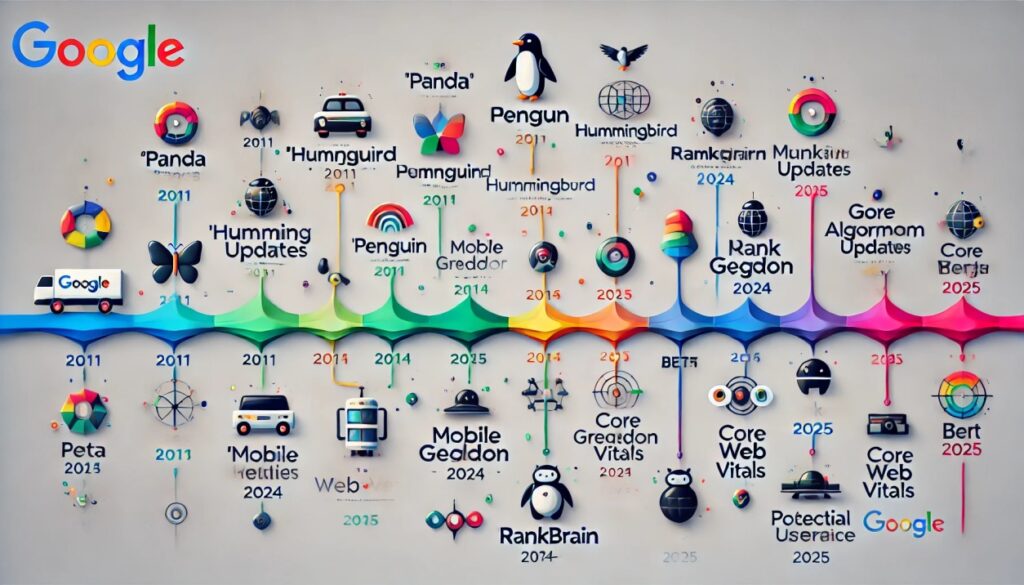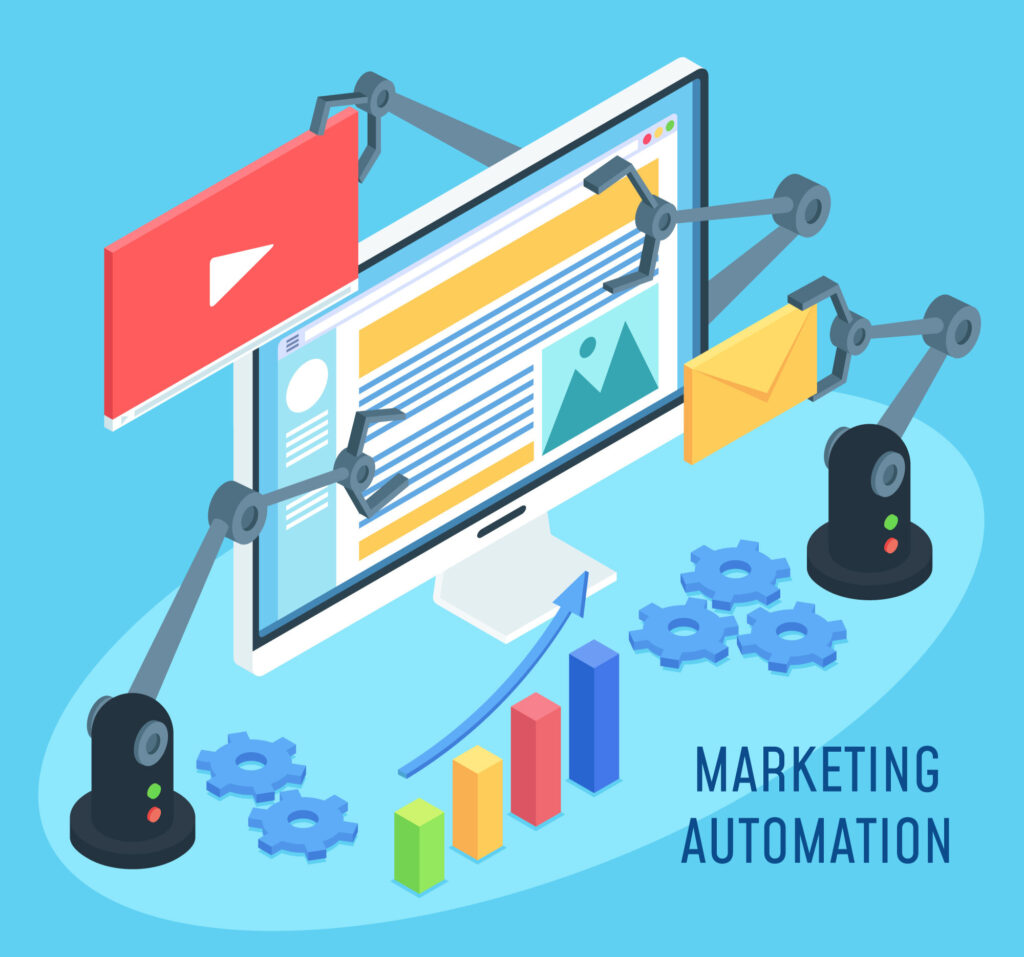The Future of SEO: Preparing for Google’s 2025 Algorithm Updates
Introduction: Why 2025 is a Pivotal Year for SEO The future of SEO is rapidly evolving, with Google continuing to revolutionize the digital marketing landscape. As the driving force behind online search, Google’s impact on digital marketing cannot be overstated. From its advancements in AI tools to its focus on delivering user-centric experiences, Google’s algorithm updates consistently challenge businesses to adapt and innovate. Staying competitive in this dynamic environment requires an understanding of the importance of staying ahead of algorithm updates. In 2025, Google’s priorities will include enhanced technical SEO, improved Core Web Vitals, and seamless integration of multimodal search and voice search capabilities. Businesses that embrace these changes and align their strategies with Google’s vision will be better positioned to achieve higher rankings and deliver exceptional user experiences. Emerging trends such as first-party data collection highlight the shift toward privacy-focused, personalized marketing, while AI-driven advancements like BERT and MUM are redefining how search queries are processed. Whether optimizing for multimodal search, enhancing voice search integration, or ensuring compliance with Core Web Vitals, businesses must remain agile and proactive to maintain their online visibility. This comprehensive guide explores Google’s evolving SEO priorities for 2025, offering actionable insights into leveraging AI tools, refining technical strategies, and embracing the future of search to drive long-term success. Overview of Google’s Impact on Digital Marketing Google has long been the driving force in digital marketing, shaping how businesses interact with consumers online. Since its inception, Google’s algorithms have constantly evolved, pushing marketers and website owners to adapt their strategies. These changes have focused on improving user experience and prioritizing high-quality content that meets the needs of searchers. The introduction of Google’s impact on digital marketing has revolutionized industries by shifting the focus from traditional marketing to data-driven strategies. Today, the platform’s tools—like Google Ads, Google Analytics, and Google Search Console—offer detailed insights, allowing businesses to tailor their marketing efforts. Furthermore, Google’s algorithm updates ensure that businesses must consistently monitor and optimize their content to remain visible and relevant in search results. By 2025, Google’s algorithms will have likely matured to integrate even more advanced technologies like AI tools in SEO, voice search, and multimodal search (combining text, image, and video). The digital marketing landscape will continue to evolve, driven by consumer demand for personalized, fast, and relevant content. Importance of Staying Ahead of Algorithm Updates With hundreds of algorithm updates released annually, Google’s ranking system is more dynamic than ever. For businesses to stay competitive, it’s critical to keep up with these changes. Staying ahead of algorithm updates involves not just reacting to new updates but anticipating trends that may shape SEO practices. Google’s algorithm updates are designed to enhance user experience, meaning businesses that focus on offering value to their target audience will be rewarded. A major trend shaping the SEO future is Google’s increasing reliance on user-centric experiences. The company’s recent emphasis on Core Web Vitals—a set of metrics that measure the performance of a website—underlines the importance of site speed, interactivity, and visual stability. Staying ahead of algorithm updates means understanding the shifting focus from traditional SEO tactics (like keyword optimization) to a broader focus on how users interact with your website. Google’s focus on quality content and user experience is likely to increase by 2025. The implementation of AI-driven algorithms such as BERT and MUM will refine Google’s ability to understand complex user queries, including multilingual and multimodal inputs. This shift underscores the importance of creating content that answers user queries in a meaningful, detailed way. Google will no longer reward shallow, keyword-stuffed content, but rather content that addresses user needs. For businesses and marketers, preparing for Google’s 2025 algorithm updates requires a focus on optimizing user experience, integrating multimedia content, and utilizing AI tools in SEO to create content that Google deems valuable. 1. Core Focus Areas for Google’s 2025 Algorithm How Google is Prioritizing User Experience and Search Intent As we move toward 2025, Google’s algorithm will continue its shift towards prioritizing user-centric experiences and search intent. With the introduction of AI-powered systems like BERT and MUM, Google has become significantly better at understanding user queries in context. Gone are the days when content was ranked purely based on the presence of specific keywords. Today, Google evaluates how well content satisfies the underlying intent behind a search query. For example, when a user searches for “how to start an online store,” Google doesn’t just look for pages with the keywords “start,” “online store,” or “e-commerce.” It evaluates whether the content on that page answers the user’s query in a meaningful and actionable way, offering solutions, strategies, and clear steps. Content that aligns with this search intent is prioritized over general or off-topic articles. To meet Google’s evolving focus on user-centric experiences, businesses must: Focus on creating high-quality, informative content that directly addresses user queries. Use structured data and schema markup to enhance search visibility and allow Google to better understand content. Improve on-site user experience by ensuring fast page load speeds and mobile optimization. The Continued Shift Towards AI-Driven Search AI-driven search algorithms are at the heart of Google’s transformation. By 2025, AI models like BERT (Bidirectional Encoder Representations from Transformers) and MUM (Multitask Unified Model) will be even more advanced, allowing Google to process not just text, but images and videos simultaneously. This multimodal approach means that Google can better understand complex, natural language queries that involve various types of media. For example, if someone asks, “What is the best recipe for chocolate cake using dark chocolate?” Google will be able to understand both the textual query and any images or videos related to the recipe. Google’s algorithms will combine these inputs to provide a more accurate result. The rise of AI-driven search means that businesses need to focus on integrating various types of content (text, images, and video) to be visible across all possible formats. Websites that only offer text-based content risk being left behind in the race for SEO supremacy. The Role of E-E-A-T
The Future of SEO: Preparing for Google’s 2025 Algorithm Updates Read More »



